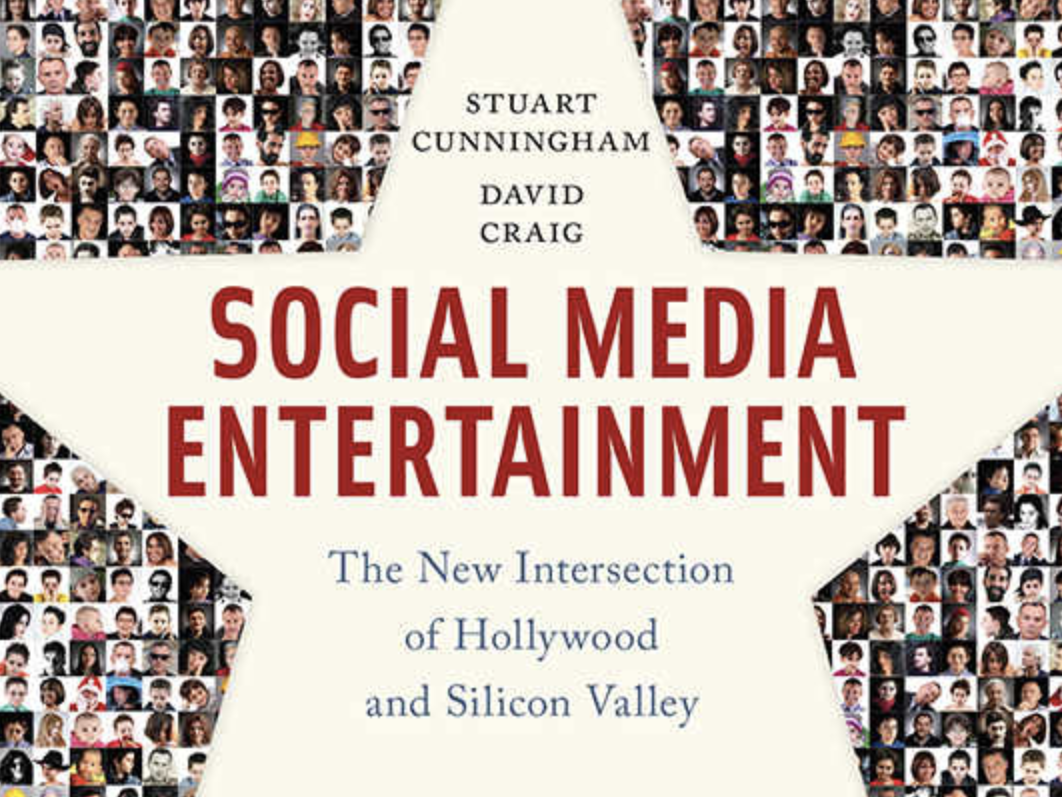David Craig Tackles the Next Frontier of Entertainment

The rise and reign of social media is something that couldn’t have been predicted. This particularly excites David Craig, who is now paving the way in social media research, coining a new term for a cultural industry driven by the phenomenon— social media entertainment.
“We’ve started to understand social media entertainment is really the cutting edge of creative labor online,” Craig explained. “It’s now the way in which any brand, service, product, or any cause, community, or subculture is going to need to learn to create value—both cultural value and commercial value.”
But what is social media entertainment, and how has it become so impactful?
Separate from both traditional entertainment (i.e. Hollywood) and digital media, which encompasses streaming platforms such as Netflix, social media entertainment is starkly different, putting creators at the pinnacle. It has evolved from social media platforms such as YouTube, Instagram, Facebook, Snapchat and Tumblr, and those who not only use the platforms but uniquely leverage them.
“Social media entertainment is this complex ecology that not only looks across platforms and creators and new forms of creative labor and management,” Craig said. “But also new forms of culture and community.”

According to his research, it is the creation of these communities, more so than their content, that really distinguishes creators as new industry trailblazers. Craig referred to these communities as “micro-societies” rooted in shared interests, values, and experiences that creators at the helm have been able to convert into business models with various revenue streams.
“We see these creators as the vanguard of the next forms of creative industries, of creative labor,” Craig said. “And they’re not only disrupting traditional media like Hollywood, they’re disrupting everything, every sphere of culture and society have been affected by what creators are now doing. ”
Craig’s foray into the topic was almost accidental, “snowballing” from what was meant to be a small collaboration with now research partner Stuart Cunningham, a renown Australian scholar and author. Cunningham reached out to Craig asking for his assistance on a project in LA exploring if YouTubers were leveraging the platform as a backdoor into Hollywood.
“What we found, the way users have harnessed these platforms, there were profound and unexpected differences that we thought were worth celebrating and explored in further detail,” Craig explained. “This is something very different from Hollywood. There’s a small Venn diagram that overlaps with the people using these platforms and also trying to break into traditional media such as Hollywood.”
The rest, as they say, is history. According to Craig, the three interviews in the YouTuber project turned into roughly 300 interviews, spanning 25 cities in 10 countries.
“The most profound difference we found really was marginalized people being able to not only have a voice, but profit from it,” Craig notes. “They no longer have to rely on gatekeepers to dictate what culture is shared with the world and who gets to profit from that culture.”

These profits are what fuel industry disruption and are derived from brand sponsorships, advertising revenues and new business ventures, such as cosmetics lines. Canadian-Indian, bisexual YouTuber Lilly Singh is a good example. She made over $10.5 million from her popular YouTube channel IISuperwomanII, which led to a variety of opportunities such as a partnership with Calvin Klein, a UNICEF Goodwill Ambassadorship and her recently announced late night talk show on NBC.
While Singh is an extreme example, Craig and Cunningham found success stories in social media entertainment to be a global phenomenon. Asian Americans and the LGBTQ community are at the forefront of YouTube in the US, while rural homemakers in India share family recipes online and create revenue through traditional cooking.
Craig emphasized social media entertainment in China— dubbed ‘Wang Hong’, or ‘Internet Red’— is a particularly successful industry. The seamless integration of e-commerce through social media is just making its way into the US market through efforts like the recently launched Checkout feature on Instagram, yet those practices have been well-established in China for years. In 2018, Chinese live streamers procured $4.4 billion in direct e-commerce revenue. These streamers dominate e-commerce, marketing and advertising in the country in unprecedented ways. Craig cites China’s readily available and affordable high-speed internet as a key driver.
Craig’s research with Cunningham has led to three books—the first of which, Social Media Entertainment, was published in February through NYU Press. One book will be dedicated solely to Wang Hong in China.
“It’s the most challenging and exhilarating thing,” Craig said. “It’s like being an aviation scholar at the beginning of flight, witnessing it all occur in real time as you’re writing about it.”
David Craig’s book Social Media Entertainment: The New Intersection of Hollywood and Silicon Valley is available now.

